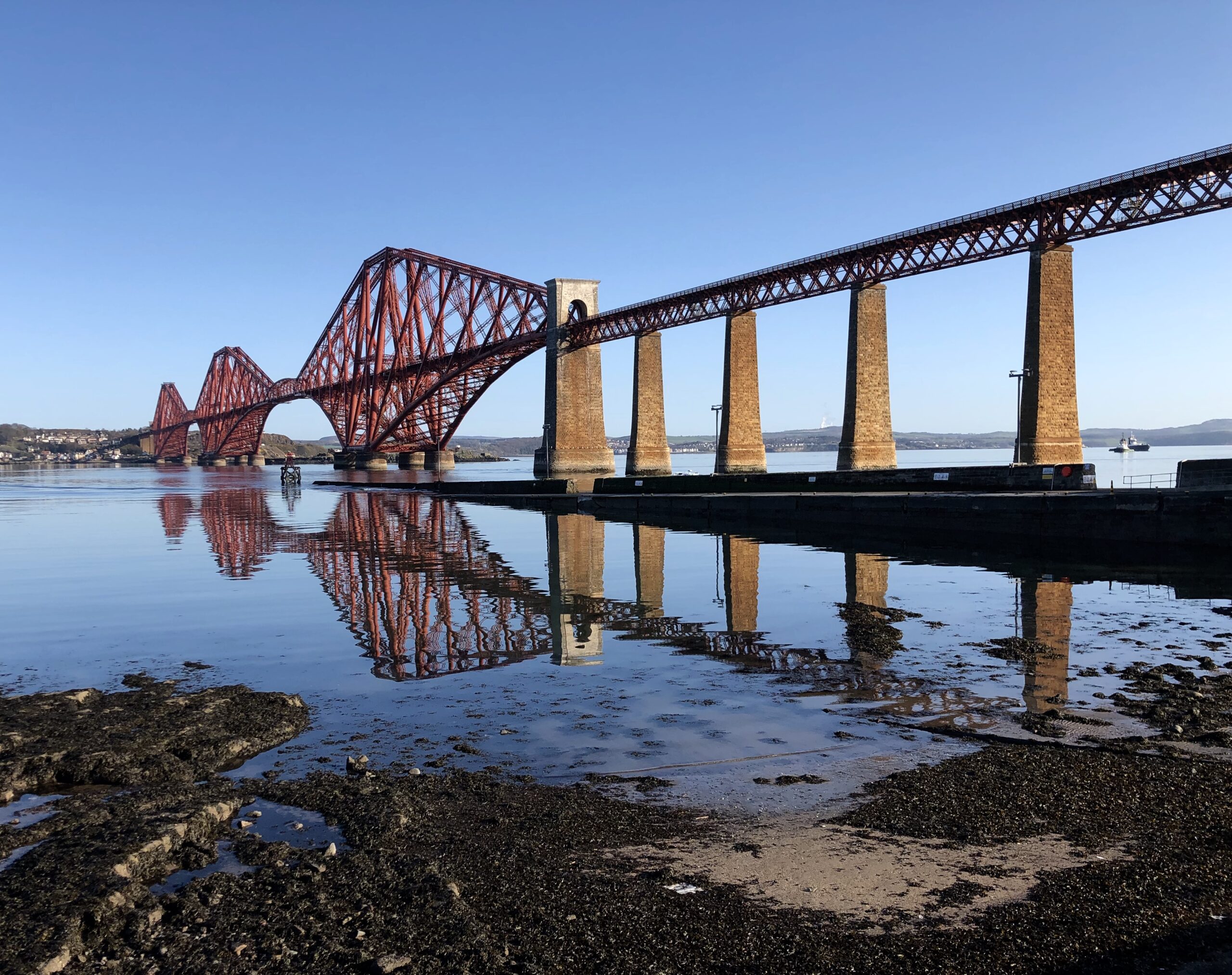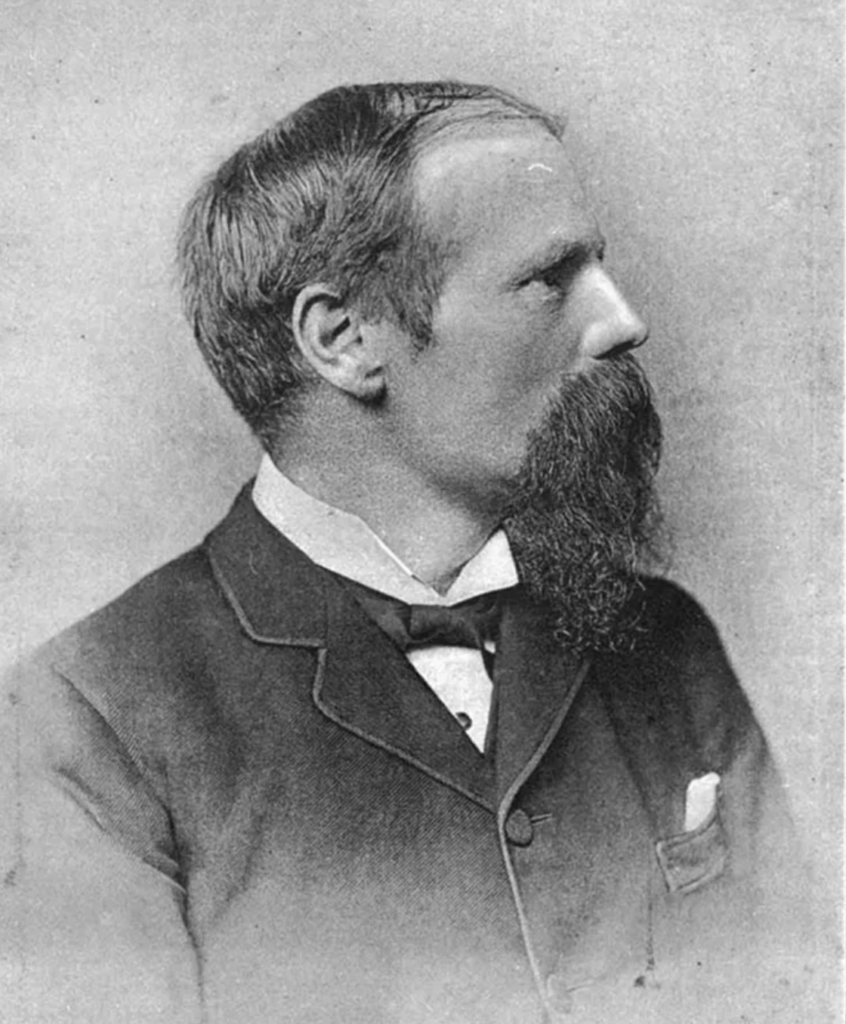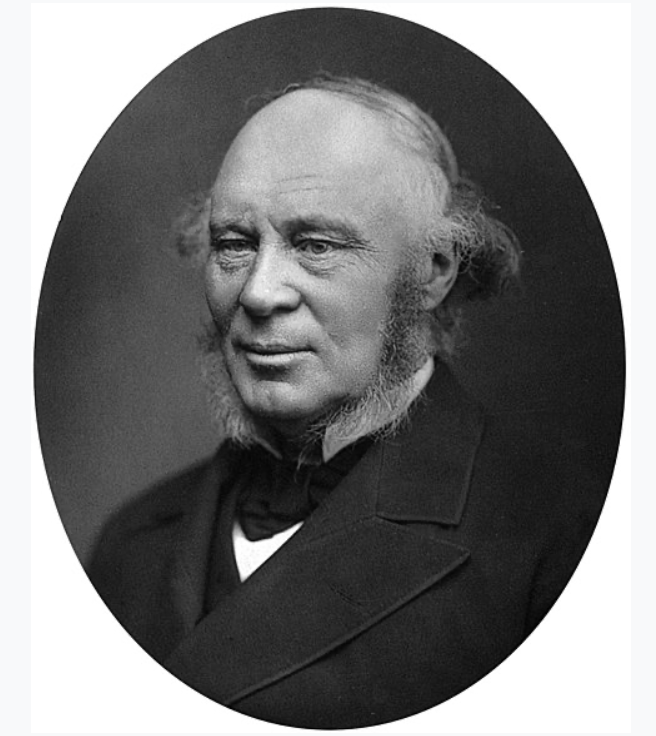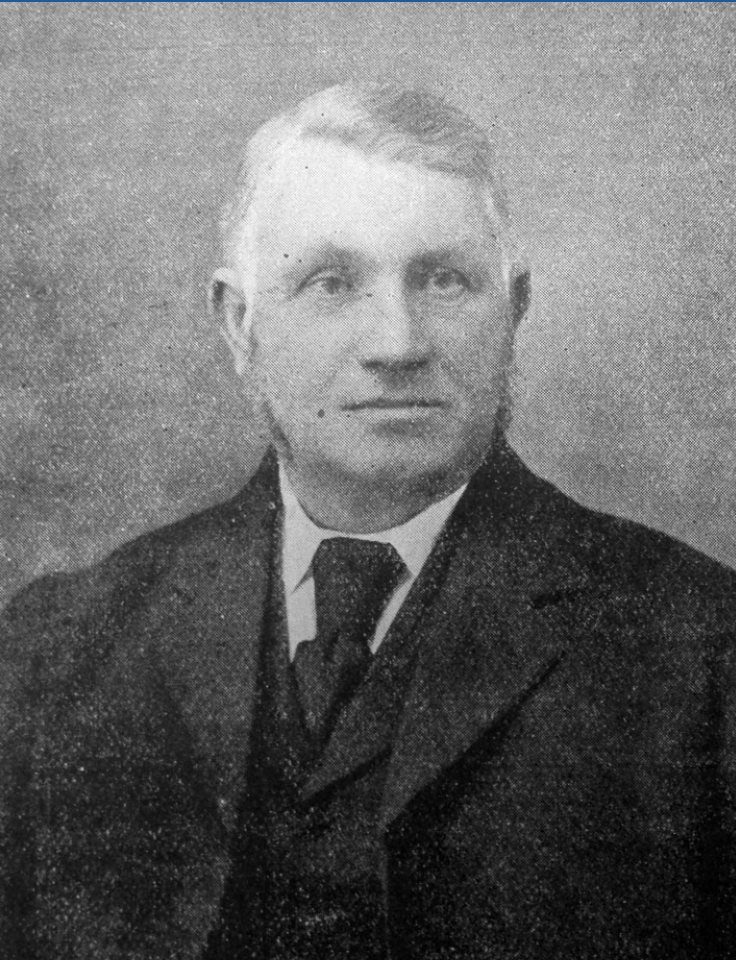THE FORTH BRIDGE
As far as bridges go, it is instantly recognisable. As far as engineering is concerned it was way ahead of its time. I can only be talking about the Forth Bridge or the Forth Rail Bridge as some prefer to refer to it. The Forth Bridge was officially opened on the 4th March 1890, some seven years after the project began.
BACKGROUND
The Forth Bridge really was the pinnacle of bridge building and was a major success for Scottish engineering in the 19th century. It was not believed possible that a bridge could be built across the Firth of Forth that would be able to sustain the weight of a train for such a long distance. However, thanks to a young engineer by the name of Thomas Bouch he was able to demonstrate that perhaps it could be possible. We will come back to Bouch a little later.
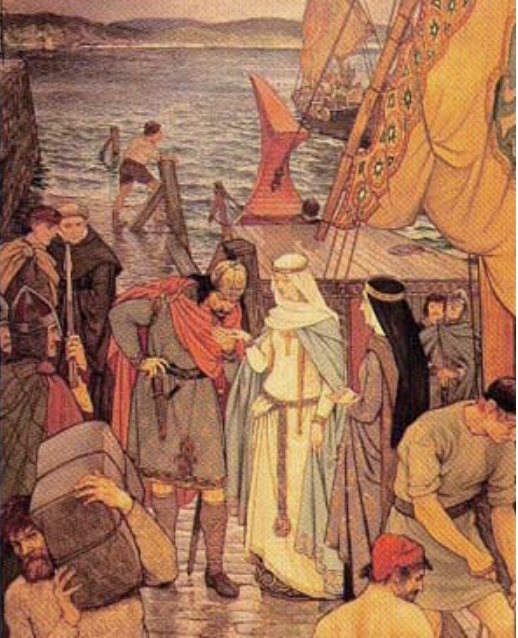
So, how did people travel north from the central Lowlands of Scotland with such a major obstacle as the Firth of Forth in their way? They basically had two choices. They could either make the long journey overland to Stirling where they could cross the Forth via the Stirling Bridge. Alternatively, they could take the ferry crossings from various departure points over to the northern shores of the Firth of Forth. This was a commonly used route for Catholic pilgrims making their way to the shrine of St Andrew. Ferries were used as far back as the 11th century thanks to Queen Margaret, herself a devout Roman Catholic.
It wasn’t until 1936 that a road bridge was built across the Forth at Kincardine. This was managed by building this bridge at a point where the Forth narrowed enough for engineers to build it. The bridge also had a swinging central section that allowed larger ships to still travel further upstream. With increasing volumes of road traffic, there was a demand by the 1950s for a much larger bridge. This eventually came about with the construction of the Forth Road Bridge in 1964. But that is for another article.
THE RAIL NETWORK
Although ferries and ships had monopolised the transportation of people and goods for centuries, there was a new kid on the block, in the shape of the rail industry. For engineers and the industrialists, the rail network was going to revolutionise transportation. No longer would industry be totally reliant on seaborne and canal transportation. Railroads would enable them to get the raw materials to factories far more quickly. But equally important, they would be able to get their goods to the consumer even more quickly and much further afield.
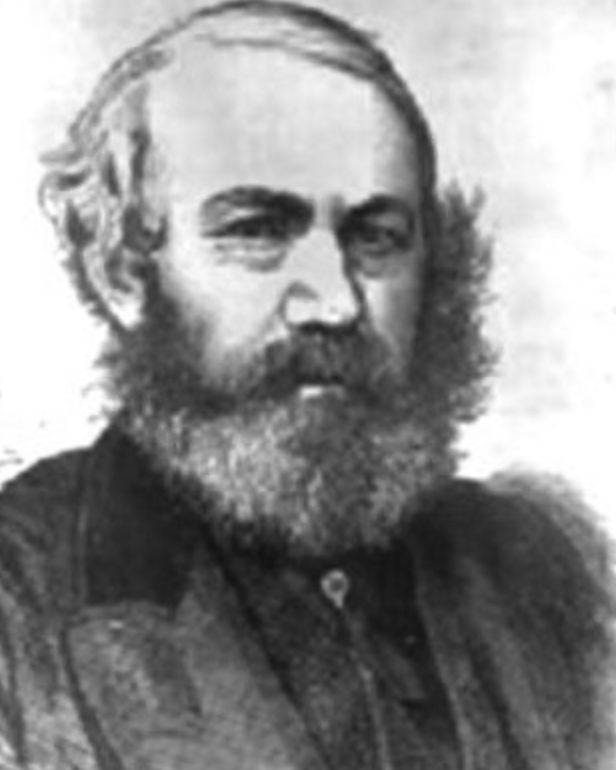
But the railroad companies had one or two hurdles to overcome. In the case of Scotland there were major rivers that had to be crossed. Three in particular were to be problematic. On the west coast we have the River Clyde, on the east coast we have the Firth of Forth and in the north east is the River Tay. This is where our aforementioned engineer Thomas Bouch comes on to the scene. He had to persuade the rail companies that he could come up with a solution for their problems. In 1849 he devised a system where trains could be floated over the water on floating platforms much like pontoons.
This impressed the directors of the North British Railway company enough that they listened to his idea of building bridges across the Tay and the Forth. He was given the go-ahead to begin construction of a bridge across the Tay in 1871 and two years later the foundation stone for a bridge to be built across the Forth was laid.
He completed the Tay Bridge and it went into full operation. Sadly in 1879 it collapsed in a terrible storm while a train was crossing it. It is believed that 75 people lost their lives in the disaster. It wasn’t the only loss, as Bouch lost the contract to build the bridge across the Firth of Forth and he himself died the following year. It is safe to say that the rail companies had become risk averse.
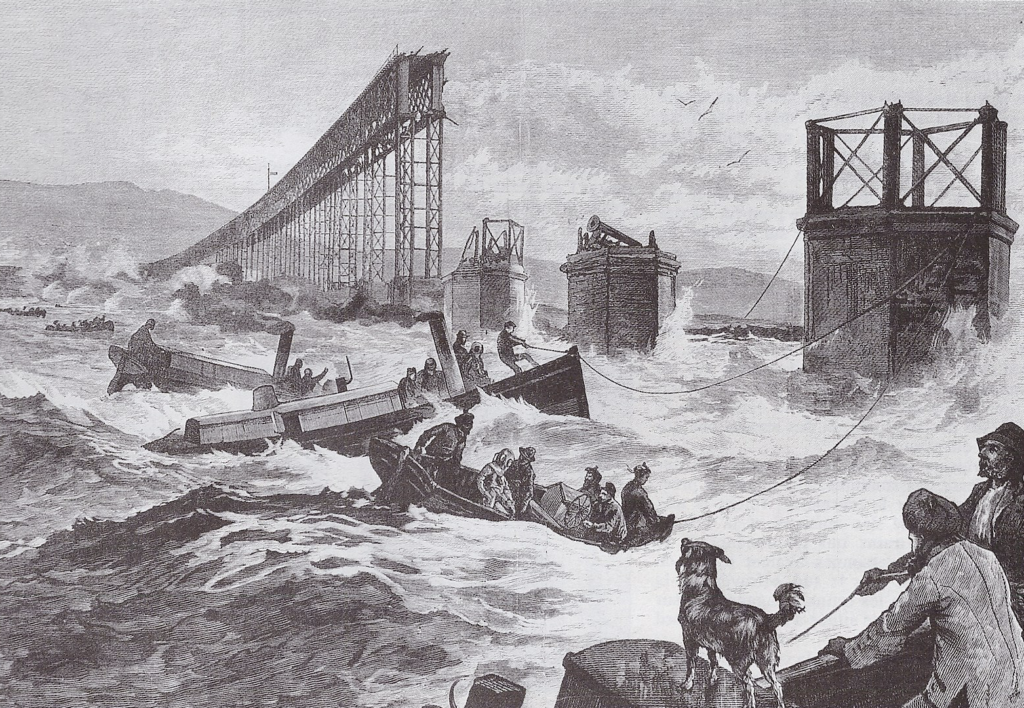
THE ENGINEERS AND THEIR VISION
It is at this point that the aspiration to be build a bridge across the Forth could have disappeared completely were it not for two men, Benjamin Baker and John Fowler. Both were highly reputable engineers who had been instrumental in the creation of the London Underground. In addition they were responsible for railway stations and rail bridges around the UK and the rest of the world. They were highly regarded and so their proposal was taken far more seriously.
There were a number of factors that enabled the construction of the Forth Bridge but without the advances in the manufacture of steel it probably wouldn’t have been possible. Remember that many bridges up until this point had been built from iron. Secondly, Baker and Fowler proposed a steel-built cantilever bridge WITH an unheard of double railway track. Furthermore, it would be required to stretch over a mile and a half from end to end at a height of 151 feet above the Forth at high tide.
The technological know-how that went into the design of this bridge was years ahead of its time. But it was a turning point and a watershed in the reputation of British engineering.
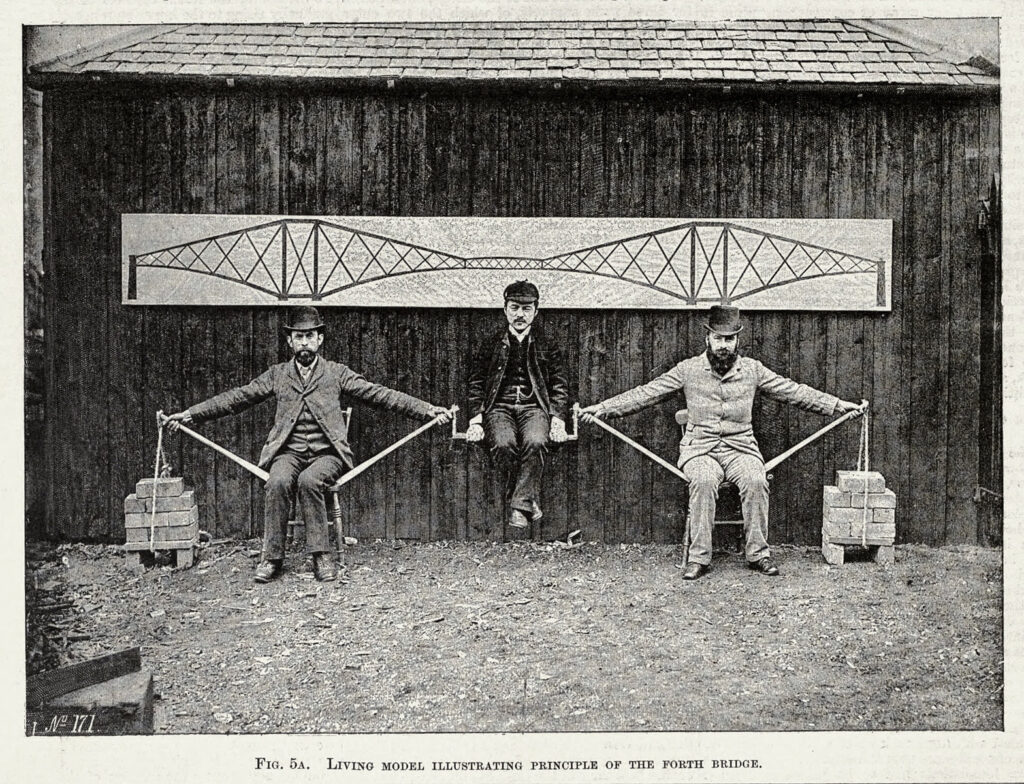
Once their design was given the go ahead, they then sub-contracted the construction of the bridge to William Arrol. Arrol was the classic Victorian ideal of a self-made man. He came from a working class background initially working as a youngster in a cotton mill before becoming a blacksmith’s apprentice at the age of 14. He learnt his trade with a firm of Glasgow bridge makers and having saved enough money he set up his own company and built his first bridge for the North British Railway company across the River Clyde.
He had originally been contracted by Bouch to build his suspension bridge but when Baker and Fowler won the replacement contract, they immediately secured Arrol to build their vision for the Forth Bridge. Arrol’s work ethic was unrelenting. He would spend two days a week on the construction of the new Tay Bridge, two days on the Forth Bridge, a day at his Dalmarnock factory before heading down to London for two days of consultation with Baker and Fowler. All three men would eventually be knighted for their work and services to the engineering world.
FACTS AND FIGURES
- The three cantilever structures that support the bridge are over 100 metres high.
- The total weight of the structure is over 50,000 tonnes.
- Over 6.5 million rivets were used in its construction.
- Approximately 4,600 men were employed in its construction both on site and at the factories where the parts were manufactured.
- Over 60 men died in its construction but it was the number of injuries that were truly mind-boggling, with over 26,000 entries just in one log book. Sadly, many hundreds were left crippled.
- However, a welfare fund was set up to take care of men who were injured and wages were much higher than the industry standard.
- Work was carried out both above AND below the surface of the Firth of Forth.
- Working 100 feet below the surface of the Forth, compressed air was pumped into the chambers where the men worked to build the huge granite foundations that the bridge would sit on.
- The bridge was completed in December 1889 but then underwent months of testing.
- Trains with twice the bridge design load were sent across to test the bridge capacity, and this was design during the height of a Scottish winter with high winds and low temperatures.
- On the 4th March 1890, the Forth Bridge was officially opened by the Prince of Wales, later to become King Edward VII.
- To this day, over 70,000 rail journeys are made across the bridge.
- At the outbreak of the Second World War, the bridge was the backdrop for one of the earliest dogfights between the German Luftwaffe and the British RAF.
- In July of 2015, on its 125th anniversary, the Forth Bridge was recognised as a World Heritage Site.
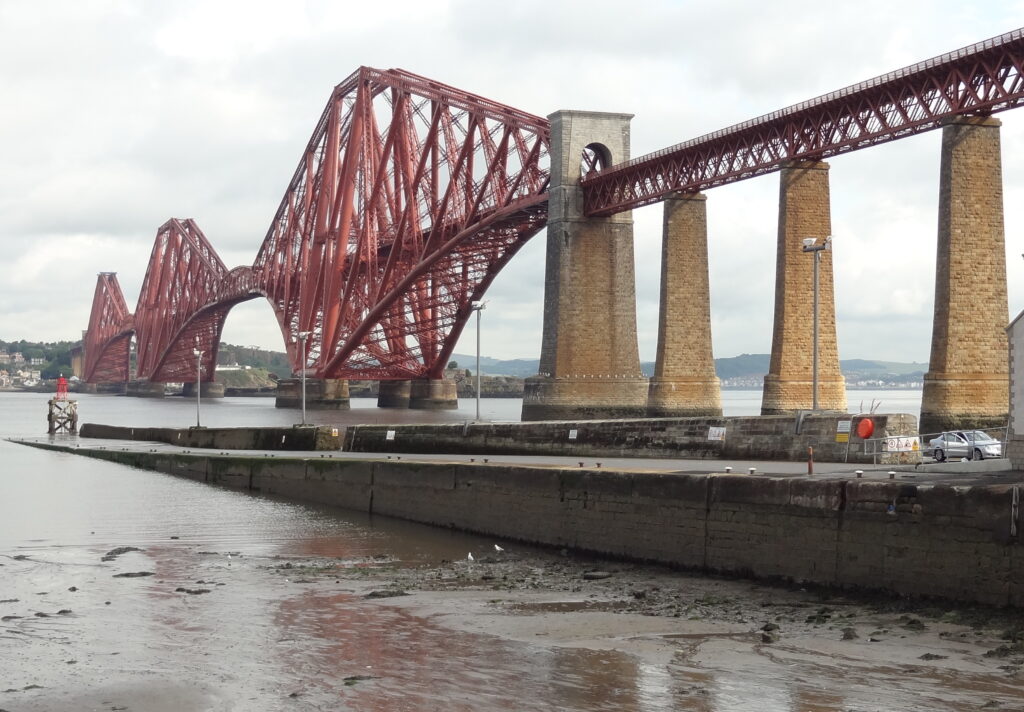
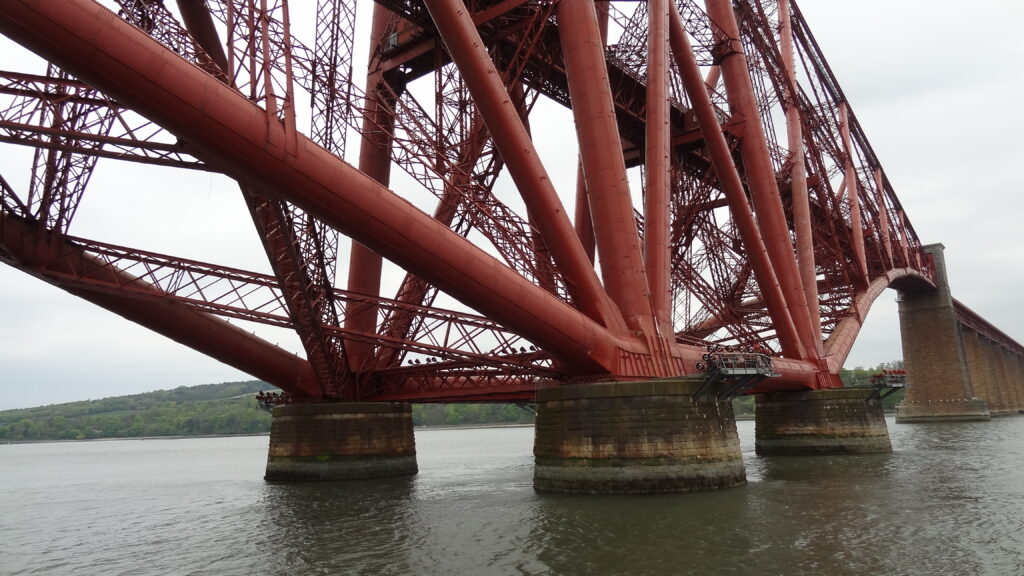
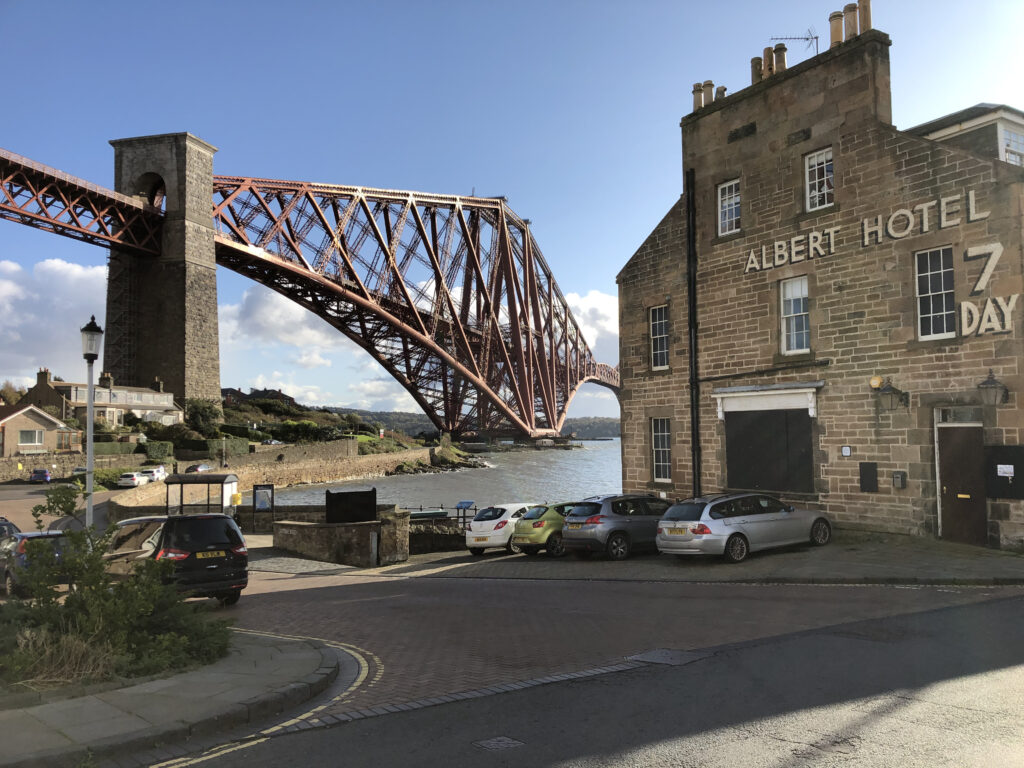
SUMMARY
Anyone visiting Scotland should try to include a visit to the small town of South Queensferry. From here you will be able to take in fantastic views of the Forth Bridge. Edinburgh Cab Tours are able to incorporate a stop at South Queensferry to get one of the best views of the Forth Bridge. We can incorporate it into our Edinburgh Y St Andrews Tour or why not include it in your Edinburgh Tour. Full details can be found on our TOURS page.
Even better there is a boat trip that takes passengers from Hawes Pier out to Inchcolm island and passes directly under the Forth Bridge. Alternatively, if travelling north/south by train you will be able to travel across the bridge and truly feel like you are living a part of history.

